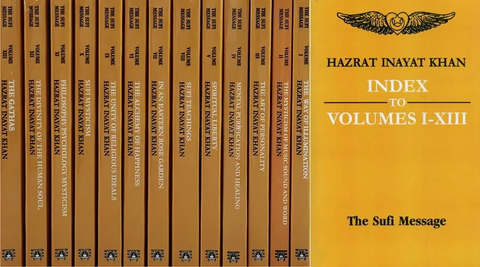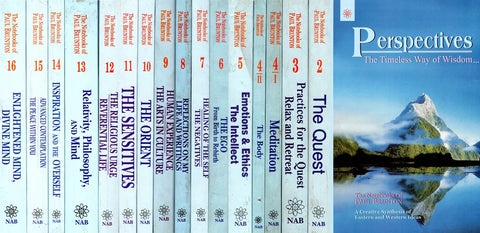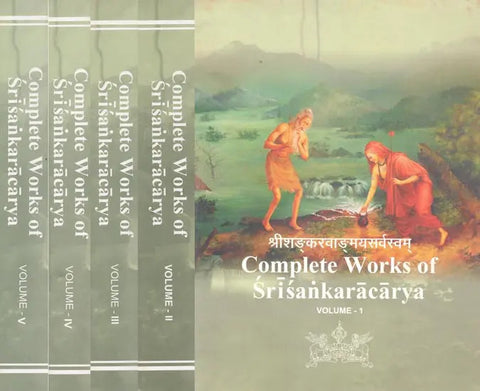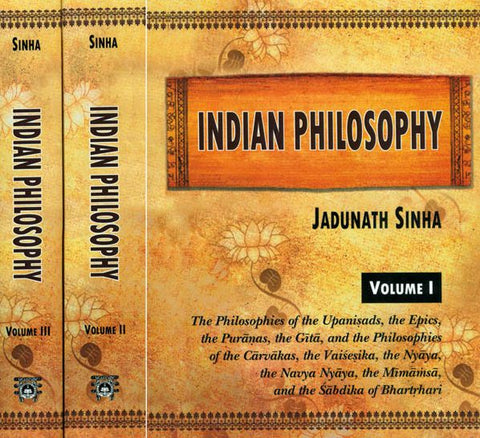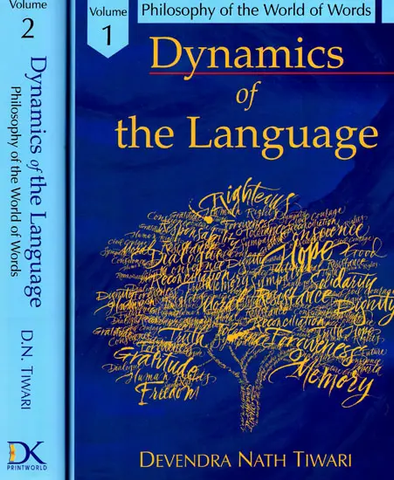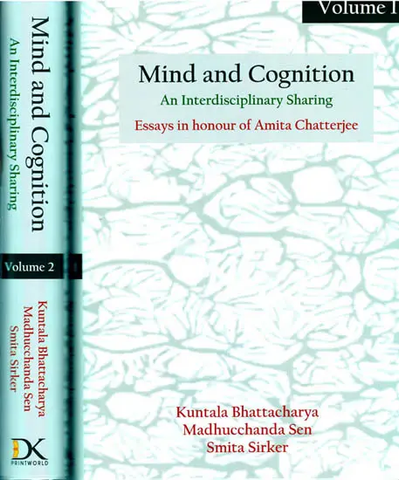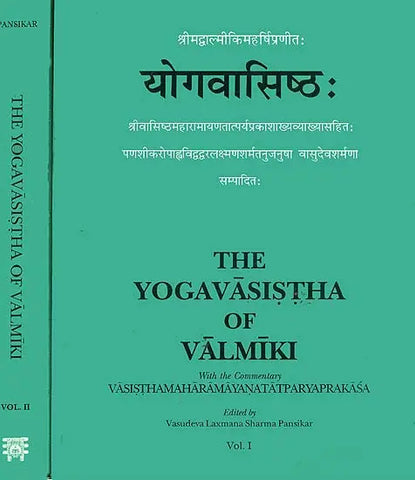Your cart is empty now.
All Volumes included in this set:
Bibliography, The Tradition of Nyaya-Vasesika up to Gangesa, Advaita Vedanta up to Samkara and his Pupils, Samkhya, The Philosophy of the Grammarians, Indian Philosophical Analysis Nyaya-Vaisesika from Gangesa to Raghunatha Siromani, Abhidharma Buddhism To 150 A.D., Buddhist Philosophy from 100 to 350 A.D., Buddhist Philosophy from 350 to 600 A.D., Jain Philosophy - Part I, Advaita Vedanta from 800 to 1200, India's Philosophy of Meditation, Nyaya-Vaisesika Philosophy from 1515 to 1660, Jain Philosophy Part II, Bhedabheda and Dvaitadvaita Systems, Philosophy of Purva-Mimamsa, Jain Philosophy Part- III, Dvaita Vedanta Philosophy, Acintyabhedhabheda Vaisnava Philosophy, Visistadvaita Vedanta, Buddhist Philosophy from 600 to 750 A.D., Buddhist Philosophy from 750 Onward, Suddhadvaita Vedanta Philosophy, Kashmir Saiva Philosophy, Bhedabheda and Dvaitadvaita Systems
VOL-2
This volume provides a detailed resume of current knowledge about the classical Indian Philosophical Systems of Nyaya and Vaisesika in their earlier stages, i.e. covering the literature from their inception in the sutras of Gautama and Kanada before the time of Gangesa (about A.D. 1350). The summaries are arranged in relative chronolo-gical order to assist the reader in tracing the development of the syncretic school's thought. Scholars around the world - India, Japan, America - have collaborated in the undertaking. The summaries in the volume serve us a tool for introducing Indian thoughts into their courses on problems of philosophy, history of thought, etc. and guide the students for further study. The index appended will enable the reader to identify all the passages summarized here on a particular topic.
The many competences of the authors of summaries include the Indian collaborators' knowledge in depth of Indian thoughts and the western points of view of the Western scholars.
Karl H. Potter is Professor of Philosophy and south Asian Studies at the University of Washington, and is General Editor of the present series, which attempts to summarily present the thought of all the great philosophical systems of India.
The present volume provides a detailed resumé of current knowledge about the classical Indian philosophical system of Nyaya-Vaisesika in its earlier stages. Specifically, it covers the literatures of Nyaya and Vaikika from their inception in the respective sutras up to the time of Gangesa, that is, about A.D. 1350. This dividing point is regularly accepted in the tradition, since with Gangea it is felt that a new start is made within the systems, the result coming to be known as Navyanyaya, “new” Nyaya. We hope that a volume will follow covering the remainder of the Nyaya-Vaiseika literature from Gangesa to the present.
A volume already published, Bibliography of Indian Philosophies (New Delhi Motilal Banarsidass, 1970), provides a useful guide to the literature, both primary and secondary, on the Nyaya-Vaisika school, and citations in the present book make constant references to the Bibliography, such references usually appearing in the form of “B” followed by the number of entry cited.
The form of this book features an extended introductory section followed by summaries of works belonging to the system’s literature. These summaries are arranged in relative chronological order to assist the reader in tracing the development of the school’s thought. Summaries have been solicited from scholars around the world— Indian, Japanese, and American scholars have collaborated in the undertaking. This international aspect of the book is one of its pleasantest features, serving to put philosophers and Indologists around the world in closer touch with one another.
A few words of explanation and advice as to how to use this book may be in order. Perhaps the first and foremost thing that needs to be said is that this volume is not intended to be analytically definitive: it invites the attention of philosophers and scholars rather than making such attention unnecessary. The thinking behind the preparation of this volume has been that philosophers without tended training in Sanskrit and Indian studies are not in a very good position to appreciate the contributions made by classical Indian philosophy toward the solution of perennial philosophical problems. This is partly due to the fact that the tradition in which the Indian schools arise and grow is foreign to Western philosophers, but our thinking is that this fact is an avoidable hazard. It is also partly due to the type of translations that have been produced by Indian and Western Sanskrit scholars; these translations, while usually accurate, are not always philosophically perspicuous, which is to say that they do not always bring out what a professional philosopher will find most interesting and identifiable in the material. The production of an acceptable translation is, and ought to be, a serious and extensive scholarly problem, and the summaries in Part II of this book are in no way intended as surrogates for such translations. Nevertheless, we think that philosophers should be provided with a tool for introducing Indian thought into their courses on problems of philosophy, history of thought, etc., and that the translations and other materials currently available to them do not make it really possible for them to work up Indian thought without more training than most philosophers are willing or able to expose themselves to. Our aim here, then, is to provide the philosopher with an account of the systematic thought of India which is less detailed than an accurate translation, but more detailed than the standard introductory textbook on Indian philosophy.
It is to be stressed that the work is addressed to philosophers primarily, and Indologists secondarily. Of course we hope that the materials here presented will, within the limits of our intent, be adjudged sufficiently accurate in terms of scholarship. The editor has endeavored to obtain the work of some of the leading scholars of the system to furnish summaries. However, these summaries omit large portions, may well omit sections which others deem of primary importance, and will otherwise deviate from the evaluations likely to be made by the Sanskritist. In order that there be no misunderstanding it is well to mention these points here. These summaries, then, are not substitutes for scholarship, but guides and markers for further study on the part of trained scholars.
In studying the philosophy of the Nyâya-Vaiesika school one finds that a fair amount of the literature occurs in the sütra or commentary form so well known in India. The reader should bear in mind that, in the summary of one of the sütras, say, what is summarized is no more than what is actually said there; if the summary seems imprecise and laconic, that is because (if we have done our work well) the sutra has those features. It is characteristic of this tradition that the commentators spell out what they believe to be the intent of the authors of the sutras; thus the reader should, if he is tracing the thought of the school on a given topic, be careful to read the summaries of the commentators in conjunction with that of the sutra. The index provided is intended to enable the reader to identify all the passages summarized here which bear upon a given topic and he is advised to use it frequently. Sometimes too an author will comment on a topic in a part of his work unrelated to any logical development that the ordinary reader can discern here again the reader may well miss this contribution unless he uses the index.
This volume has been in preparation for a number of years. Work on it began in the early 1960s. The editor wishes to thank the American Institute of Indian Studies for awarding him a follow ship in 1963-64 which enabled him to visit prospective contributors and utilize the resources that India provided for furthering his work, later on in the summer of 1967 he received a summer session grant form the University of Minnesota which enabled him to use the widener library to locate out of the way secondary materials in preparing his introductory section. He is extremely grateful for both these opportunities.
A full scale philosophical system is generally expected to speak to problems in the following areas metaphysics epistemology, ethic and theory of value logic and philosophical method. The system of Indian philosophy known as Nyaya Vaisesika is such a full scale system. Its contribution en each and every one of these areas is extensive interesting and usually of fundamental importance as this introduction will attempt to show.
Metaphysics: Nyaya-Vaisesika offers one of the most vigorous efforts at the construction of a substantialist, realist ontology that the world has ever seen. It provides an extended critique 0f eventontologies and idealist metaphysics. It starts from a unique basis r ontology that incorporates several 0f the most recent Western insights into the question of how to defend realism most successfully. This ontology is “Platonistic” (it admits repeatable properties as Plato’s did), realistic (it builds the world from “timeless” individuals as well as spatiotemporal points or events), but neither exclusively phvsicalistic nor phenomenalistic (it admits as basic individuals entries both directly known and inferred from scientific investigations)’ Though the system has many quaint and archaic features from a modern point of view, as a philosophical base for accommodating scientific insights it has advantages: its authors developed an atomic theory, came to treat numbers very much in the spirit of modern mathematics, argued for a wave theory of sound transmission, and adapted an empiricist view 0f causality to their own uses.
Epistemology: Whereas in “modern” philosophy of the West the idealist critique 0f substance initiated by Berkeley has never been curiously challenged, the philosophers of the Nyaya-Vaikika school entered the controversy very early in its history against Buddhists who used Berkeley an arguments. The resulting polemical battle may well represent the most important confrontation in philosophical literature between so-called naive realism and the threats to it from idealist sources. Nyaya offers an account of perception which makes sense of our belief in an external world, yet promises to explain the fact of perceptual error without allowing that opening wedge of idealism, the admission that the mind creates certain parts of our world (and so why not all of it ?). The intricacy of this discussion between Nyaya and Buddhism brings out many fascinating and little understood aspects of the two views and what they require from their adherents.
Ethics and Theory of Value: The Nyaya-Vaisesika system provides no startling new ideas over and beyond what is generally acceptable to Hindus, but it presents many carefully gauged arguments for the standard position, involving belief in transmigration, karma, and the possibility of liberation from future rebirths. It does not discuss questions of “ethical theory” as we understand that term in contemporary philosophy, since that was the business of others (Mimamsakas) in the peculiar division of labor adopted by the ancient Indian thinkers. However, it endorses many of the general ethical attitudes of Hindu sages, questioning some in passing. On one point Nyaya is recognized by Hindus to have provided a definitive treatment, and this is on arguments for the existence of God.
Logic: Nyaya grew in part as a theory of philosophical debate, and among Hindus has been accepted as the system which specially studies the theory of arguments good and bad, in keeping with the division of labor principle alluded to in the previous paragraph. This does not mean that all Hindu philosophers accepted every point in the Nyaya account, but they certainly tended to look to Nyaya for definitive treatment and detailed discussions of intricate points. Nyaya had its great rival, however, in the logic developed by the Buddhists, and from this controversy developed one of the mast comprehensive logical theories the world has known. Indian logic is never conceived as “format” in the Western sense, but as an account of sane processes of reasoning it has few equals in the West for attention to detail.
Philosophical Method: Topics in this area are of the greatest current interest to philosophers in the Anglo-American tradition. Western philosophers sometimes seem to suppose that the “linguistic turn” in recent philosophy is a unique phenomenon, a turning- point in the history of philosophy. Perhaps it is, but if so it took place many centuries ago in India, where attention to grammar was commonplace by the 4th century B.C. The Nyaya theory 0f language, 0f meaning and the meaningfulness of words and sentences, shows subtly at the levels of syntax semantics and pragmatics Nyaya also gave prolonged attention to defense of the empirical theory of validity and truth opposing uncritical use of introduction and authoritarian appeals to revelation.
| Preface | xi | |
|
Part One: Introduction to the philosophy of Nyaya Vaisesika
|
||
| 1 | Historical Resume | 1 |
| 2 | Theory of Value | 18 |
| 3 | Nature of a philosophical System | 38 |
| 4 | Relations | 47 |
| 5 | Substance | 69 |
| 6 | Qualities and motions | 112 |
| 7 | Universals Individuals and absences | 133 |
| 8 | Meaning and truth | 147 |
| 9 | Logical theory | 179 |
|
Part Two: Summaries of works
|
||
| 1 | Kanada | 211 |
| Vaisesikasutras (Masaaki Hattori) | 212 | |
| 2 | Gautama | 220 |
| Nyayasutras (karl H. Potter) | 221 | |
| 3 | Vakyakara | 238 |
| 4 | Katandikara | 238 |
| 5 | Vatsyayana | 239 |
| Nyayabhasya (karl H. Potter) | 240 | |
| 6 | Candramati | 274 |
| Dasapadarthasastra (masaaki Hattori) | 275 | |
| 7 | Bhavivika | 281 |
| 8 | Prasastapada | 282 |
| Padarthadharmasamgraha (karl H. Potter) | 282 | |
| 9 | Uddyotakara | 303 |
| Nyayavarttika (karl H. Potter) | 304 | |
| 10 | Atreya | 337 |
| 11 | Prticandra | 338 |
| 12 | Aviddhakarana | 338 |
| 13 | Samkara (svamin) | 340 |
| 14 | Visvarupa | 341 |
| 15 | Dhairyarasi | 341 |
| 16 | Jayanta Bhatta | 341 |
| Nyayamanjari (karl H. Potter, J.V. Bhattarchar, U. Arya) | 343 | |
| Nyayakalika (J.V. Bhattacharya) | 394 | |
| 17 | The Nyayaratnakara | 395 |
| 18 | Trilocana | 396 |
| 19 | Bhasarvajna | 398 |
| Nyayasara (karl H. Potter) | 400 | |
| Nyayabhusana (B.K. Matilal) | 410 | |
| 20 | Sanatani | 424 |
| 21 | Vyomasiva | 424 |
| Vyomavati (V. Varadachari) | 425 | |
| 22 | Vacaspati Misra | 453 |
| Nyayavarttikatatparyatika (B.K. Matilal) | 455 | |
| 23 | Adhyayana | 484 |
| 24 | Vittoka | 484 |
| 25 | Narasimha | 484 |
| 26 | Sridhara | 485 |
| Nyayakandali (karl H. Potter) | 485 | |
| 27 | Srivatsa | 520 |
| 28 | Aniruddha | 521 |
| 29 | Udayana | 521 |
| Laksanavali (karl H. Potter) | 523 | |
| Laksanamala (S. Subramanya Sastri) | 525 | |
| Atmatattvaviveka (V. Varadachari) | 526 | |
| Nyayakusumanjali (karl H. Potter and Sibajiban Bhattacharya) | 557 | |
| Nyayaparisista | 588 | |
| Nyayavarttikataparyatikaparsuddhi | 588 | |
| Kiranavali (B.K. Matilal) | 589 | |
| 30 | Aparajadeva | 603 |
| Nyayamuktavali (S. Subrahmanya Sastri) | 604 | |
| 31 | Srikantha | 612 |
| 32 | The Vrttikara | 612 |
| 33 | Vallabha | 613 |
| Nyayalitavati (J.N. Mohanty) | 613 | |
| 34 | Varadaraja | 629 |
| Tarkikarakasa with Sarasamgraha (karl H. Potter) | 629 | |
| Nyayakusumanjalibodhani (G.Bhattacharya) | 640 | |
| 35 | Sivaditya | 642 |
| Saptapadarthi (karl H. Potter) | 643 | |
| Nyayamala (S. Subramanya Sastri) | 645 | |
| 36 | Vadindra | 646 |
| Mahavidyavidambana (E.R. Sreekrishna Sarma) | 647 | |
| Krianavalidarpana (G. Bhattacharya) | 652 | |
| Kandasutranibandha | 658 | |
| 37 | Bhatta Raghava | 659 |
| 38 | Divakara | 659 |
| 39 | Vadi Vagisvara | 660 |
| 40 | Narayana Sarvajna | 663 |
| 41 | Kesava Misra | 663 |
| Trakabhasa (karl H. potter) | 664 | |
| 42 | Anandanubhava | 667 |
| 43 | Prabhakaropadhyaya | 667 |
| 44 | Abhayatilaka | 668 |
| 45 | Sondadopadhyaya | 668 |
| 46 | Manikantha Misra | 668 |
| Nyayaratna (V. Varadachari) | 669 | |
| 47 | Sasadhara | 682 |
| Nyayasidhantadipa | 682 | |
| 48 | Tarani Misra | 684 |
| 49 | Jagadguru | 684 |
| 50 | Ravisvara | 685 |
| 51 | Nyayabhaskarakara | 685 |
| 52 | Visnumisra | 685 |
| 53 | Vidyadharamisra | 685 |
| 54 | Srikara | 685 |
| 55 | Bharadvajavrttikara | 685 |
| 56 | Candrananda | 685 |
| Notes | 687 | |
| Index | 717 |


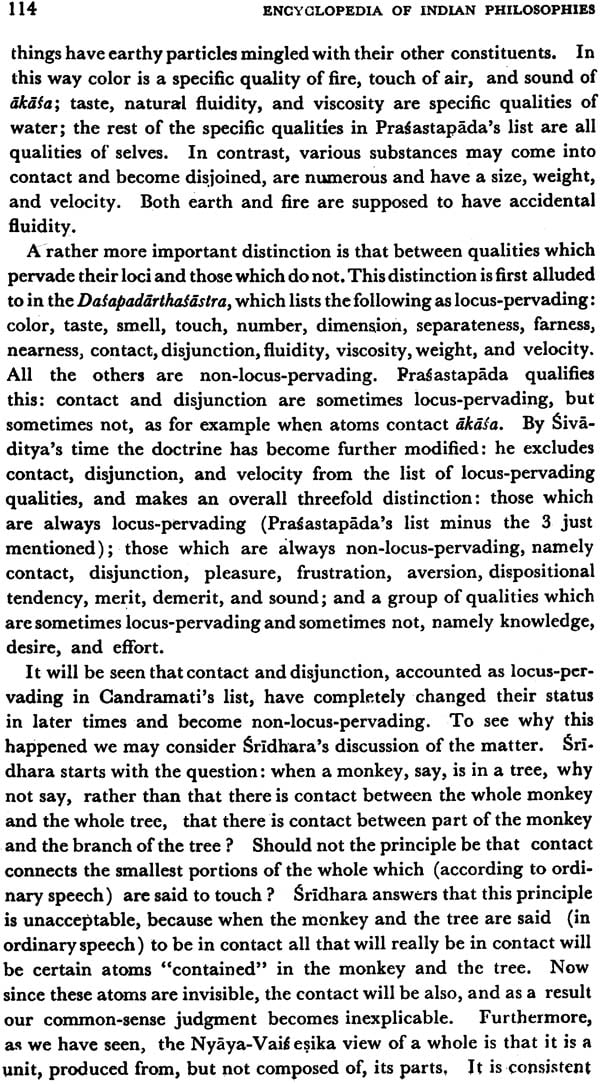
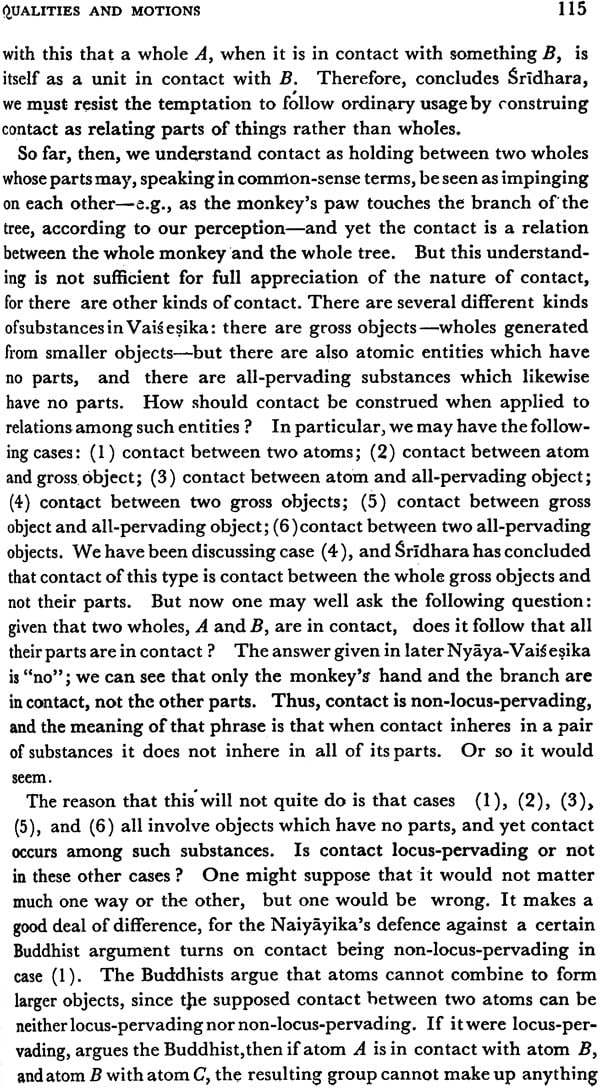
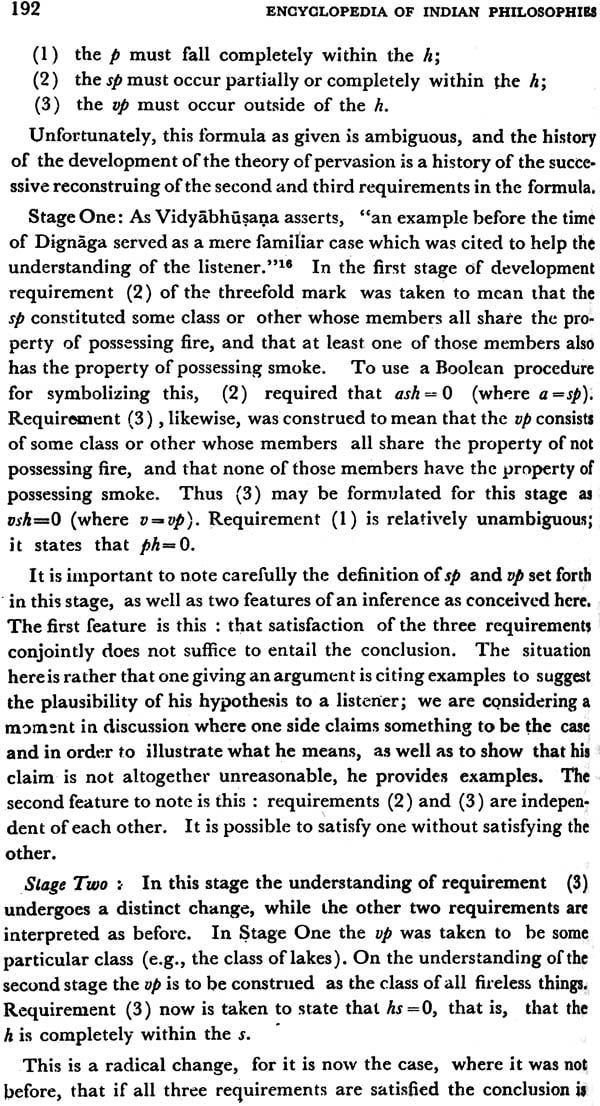


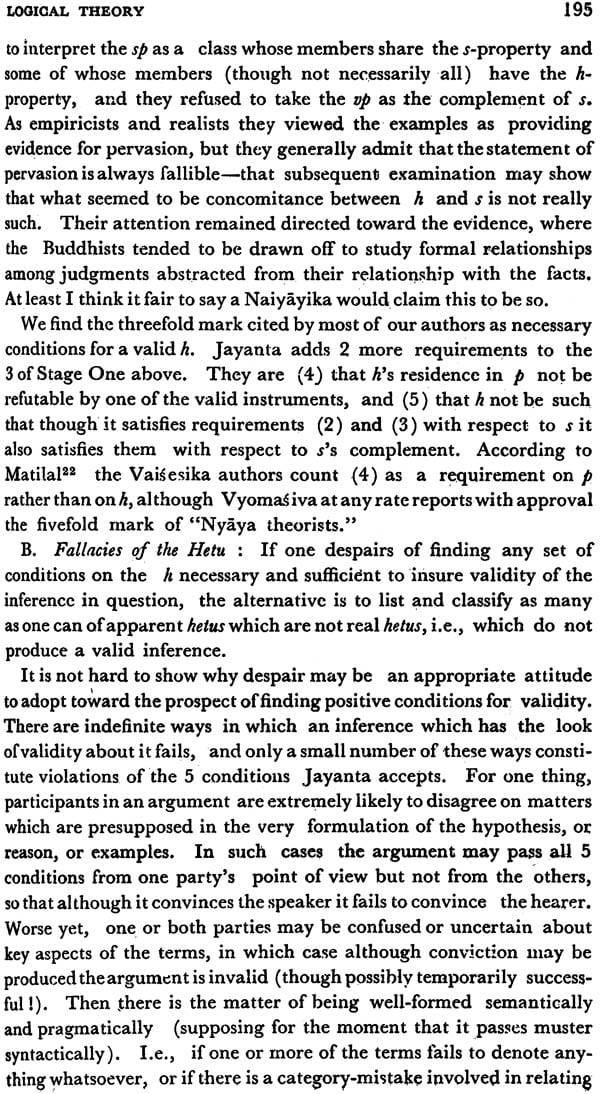

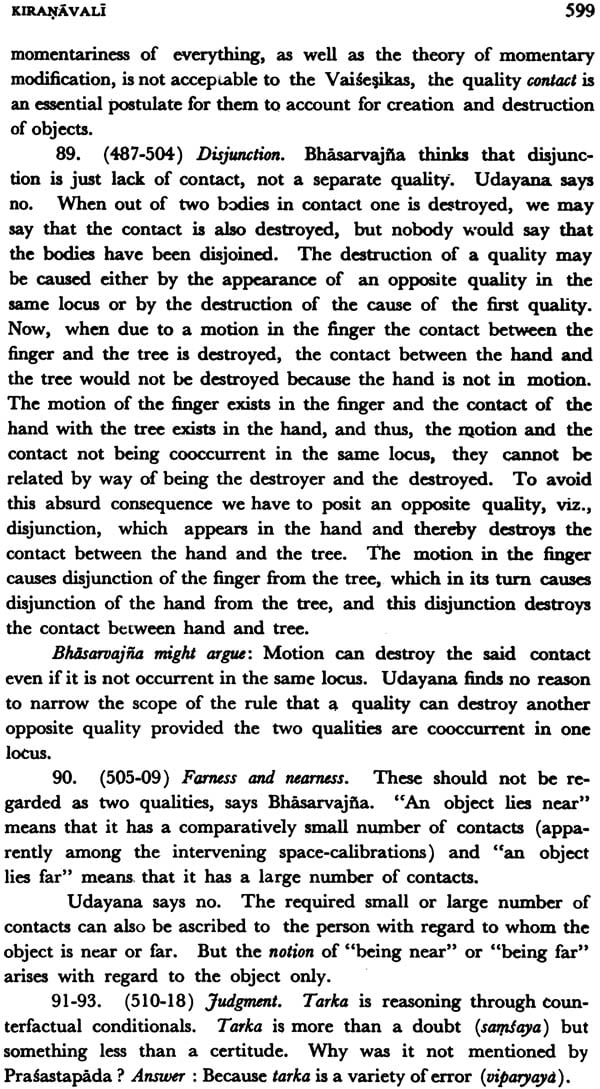
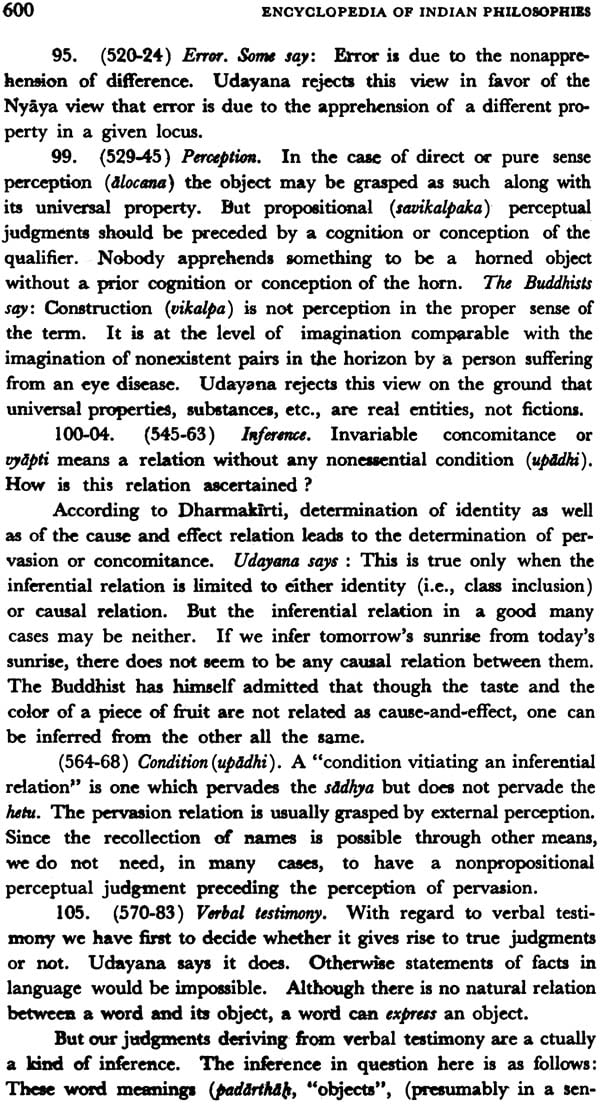
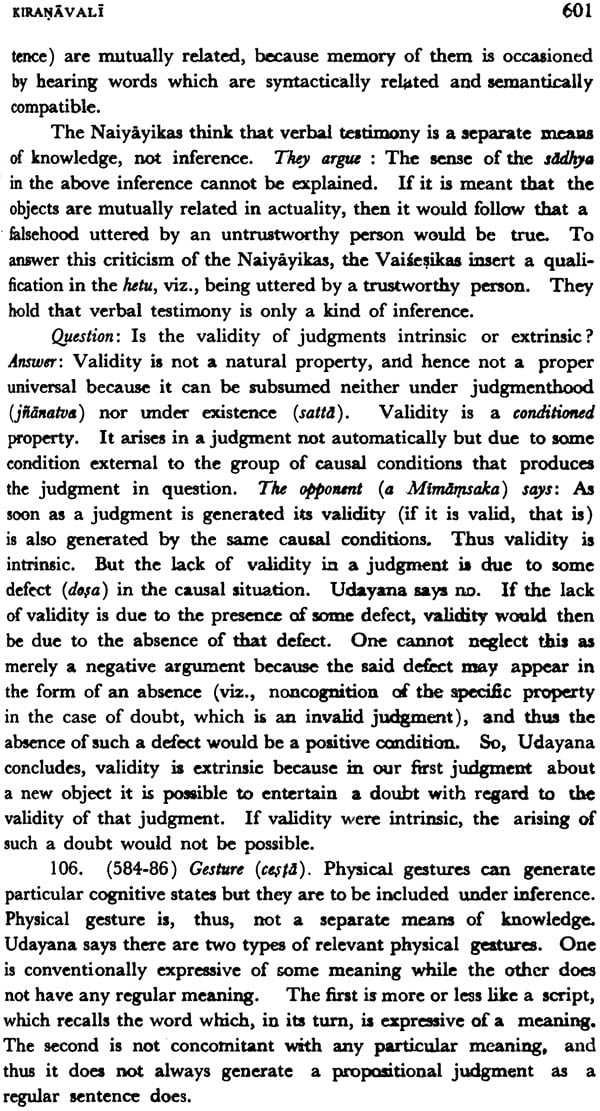

VOL-3
This volume summaries what we know of early Advaita Vedanta upto the Samkara's pupils, Suresvara, Padmapada, Totaka and Hanstamalaka. An analytical introduction by the editor introduces the reader to the concepts utilized by Gaudapada, Samkaracarya and Mandana Misra in expounding and defending the Advaita view. This is followed by summaries of all the authentic Advaita works of these authors, together with those of Suresvara and Padmapada as well as a number of other works which have been attributed to Samkara, Totaka and Hastamalaka. This volume is divided into two parts and is enriched with an elaborate Introduction discussing briefly the history of the school its theories of value, language and relations and its metaphysics and epistemology.
About the Author:
Karl H. Potter is Professor of Philosophy and south Asian Studies at the University of Washington, and is General Editor of the present series, which attempts to summarily present the thought of all the great philosophical systems of India.
This volume, the third in the Encyclopedia of Indian Philosophies, is the first of those devoted to the philosophy of Advaita Vedanta. It covers the writings of Gaudapada, Samkaracarya, Mandana Misra and Samkara’s pupils: Suresvara, Padmapada, Totaka, and Hastamalaka (the last according to traditional authorities only).
The remarks offered in the preface to volume two in this series relating to the general intent of the Encyclopedia apply to this volume and others to follow. To review briefly: this volume is intended, not as a definitive study of the works summarized, but as an invitation to further philosophical attention to them. The plan has been to make available the substance of the thought contained in these works, so that philosophers unable to read the original Sanskrit and who find difficulty in understanding and finding their way about in the translations (where such exist) can get an idea of the positions taken and arguments offered. The summaries, then, are intended primarily for philosophers and only secondarily for Indologists, and certain sections of the works have been omitted or treated sketchily because they are repetitious or deemed less interesting for philosophers, though they may be of great interest to Sanskritists. I might also add that the summaries are not likely to make interesting consecutive reading; they are provided in the spirit of a reference work. It is hoped, on the other hand, that the editor’s Introduction will provide a readable account of some of the pertinent features of Advaita Vedanta for those hitherto unacquainted with that system of thought.
Preparation of this volume has been assisted materially by the gracious assistance provided by several agencies and individuals. The Bureau of Educational and Cultural Affairs of the U.S. Depart men of State, represented by Ms. Evelyn Barnes, kindly provided the project a generous grant in PL-480 rupees to cover preparation of this and other volumes. This grant made possible contacts with Indian colleagues and provided honoraria for a number of the summaries here included. The grant has been administered through the American Institute of Indian Studies, which has provided generous assistance in easing administrative details connected with the gathering of summaries, in arranging editorial travel and consultation, and in providing secretarial assistance and supplies. I wish especially to thank Pradip R. Mehendiratta and Edward C. Dimock for their good offices. In 1975 I received a fellowship from the American Council of Learned Societies through the Joint Committee on South Asia of the American Council of Learned Societies and Social Science Research Council that enabled me to make use of the unparalleled collections at the India Office Library and British Museum in London, without which opportunity a number of the summaries could not have been completed and much scholarly information could not have been conveyed or alluded to through references.
I wish to thank James Settle of the American Council of Learned Societies as well as the authorities and staff members at the libraries mentioned. Finally, there are several individual scholars who are probably not aware of the extent of their contribution to this volume through their helpful and provocative conversation with me over the years in connection with Advaita. I wish especially to record my appreciation and debt to Anthony J. Alston, Daniel H. H. Ingalls, T. R. V. Murti, and Allen W. Thrasher for sharing their scholarship and thought with me. I am, needless to say, responsible for all misinterpretation of the materials that have crept into what follows.
| PREFACE | IX |
| PART ONE: | |
| INTRODUCTION TO THE PHILOSOPHY OF ADVAITA VEDANTA (Karl H. Potter) | |
| 1. Historical Resume | 3 |
| 2. Theory of Value | 22 |
| 3. Philosophy of Language | 46 |
| 4. Identity and Difference: The Theory of Relations | 62 |
| 5. Advaita Metaphysics | 74 |
| 6. Advaita Epistemology | 92 |
| PART TWO: | |
| SUMMARIES OF WORKS | |
| 1. Gaudapada | 103 |
| Gaudapadakarikas, or Agamasastra (Karl H. Potter) | 105 |
| 2. Samkara | 115 |
| Brahmasutrabhasya (Karl H. Potter) | 119 |
| Brahadaranyakopanisadbhasya (Karl H. Potter) | 180 |
| Taittriyopanisadbhasya (Karl H. Potter) | 204 |
| Upadesasahasri (Karl H. Potter) | 217 |
| Chandogyopanisadbhasya (Karl H. Potter) | 254 |
| Aitareyopanisadbhasya (Karl H. Potter) | 270 |
| Isopanisadbhasya (Karl H. Potter) | 278 |
| Kathopanisadbhasya (Karl H. Potter) | 280 |
| Kenopanisatpadabhasya (Karl H. Potter) | 281 |
| Mundakopanisadbhasya (Karl H. Potter) | 284 |
| Prasnopanisadbhasya (Karl H. Potter) | 289 |
| Bhagavadgitabhasya (Karl H. Potter) | 294 |
| Mandukyopanisadbhasya with Gaudapadakarikabhasya (Karl H. Potter) | 308 |
| Daksinamurtistotra (Karl H. Potter) | 317 |
| Pancikarana (Karl H. Potter) | 318 |
| Aparoksanubhuti (Karl H. Potter) | 320 |
| Atmabodha (Karl H. Potter) | 323 |
| Satasloki (Karl H. Potter) | 324 |
| Balabodhini, or Atmajnanopadesavidhi (Karl H. Potter) | 326 |
| Atmanatmaviveka (Karl H. Potter) | 328 |
| Tattvabodha (Karl H. Potter) | 331 |
| Dasasloki (Karl H. Potter) | 333 |
| Vakyavrtti (Karl H. Potter) | 334 |
| Vivekacudamani (Karl H. Potter) | 335 |
| Sarvavedantasiddhantasarasamgraha (Karl H. Potter) | 339 |
| Advaitapancaratna, or Atmapancaka (K. Raghavan Pillai) | 343 |
| Vakyassudha, or Drgdrsyaviveka | 344 |
| Upadesapancaka | 344 |
| Mayapancaka | 344 |
| Laghuvakyavrtti | 345 |
| Commentaries on other Upanisads | 345 |
| 3. Mandana Misra | 346 |
| Brahmasiddhi (Allen W. Thrasher) | 347 |
| 4. Suresvara | 420 |
| Brhadaranyakopanisadbhasyavarttika (S. Subrahmanya Sastri) | 420 |
| Taittiriyopanisadbhasyavarttika (Karl H. Potter) | 521 |
| Naiskarmyasiddhi (Karl H. Potter) | 530 |
| Daksinamurtivarttika, or Manasollasa (Karl H. Potter) | 550 |
| Pancikaranavarttika, or Pranavavarttika (Karl H. Potter) | 560 |
| 5. Padmapada | 563 |
| Pancapadika (Karl H. Potter) | 564 |
| 6. Totaka, or Trotaka, | 598 |
| Srutisarasamuddharana (Karl H. Potter) | 598 |
| 7. Hastamalaka | 601 |
| Hastamalakaslokah (Edeltraud Harzer) | 601 |
| NOTES | 603 |
| INDEX | 613 |

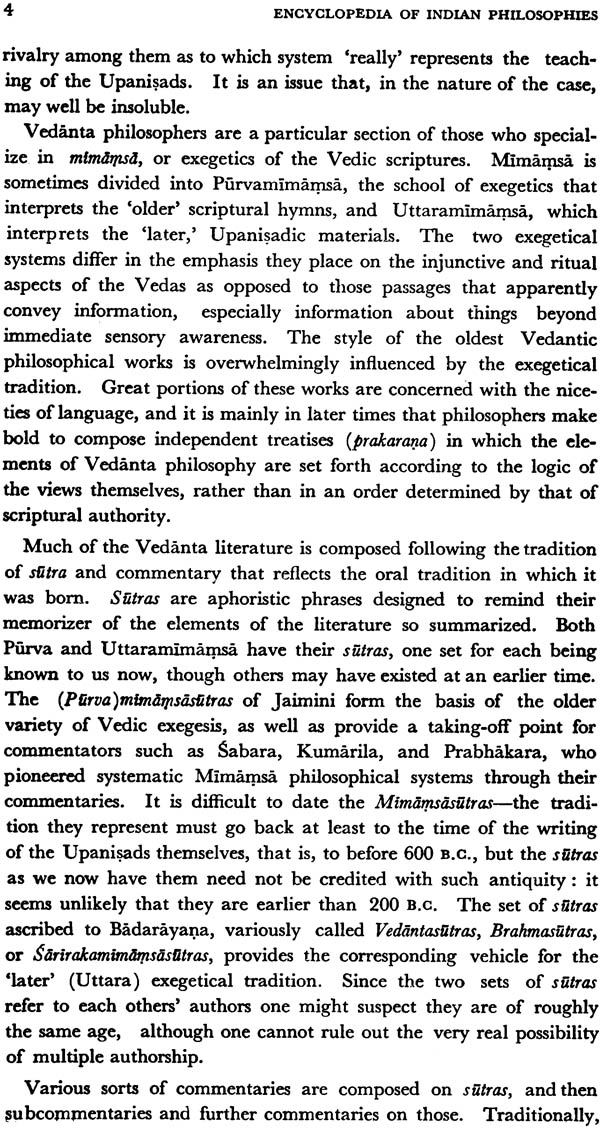
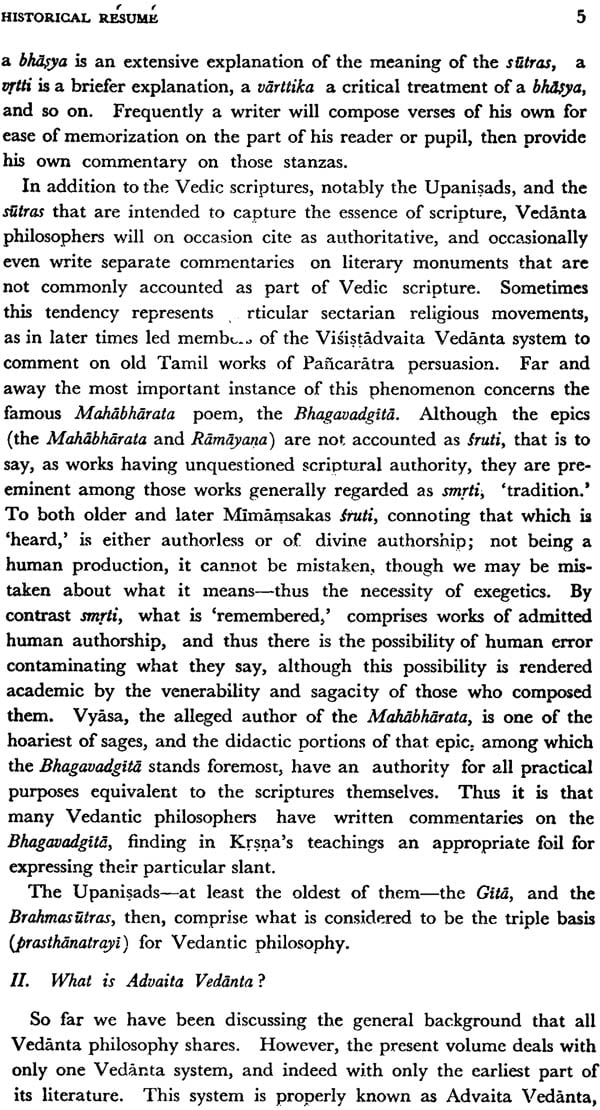
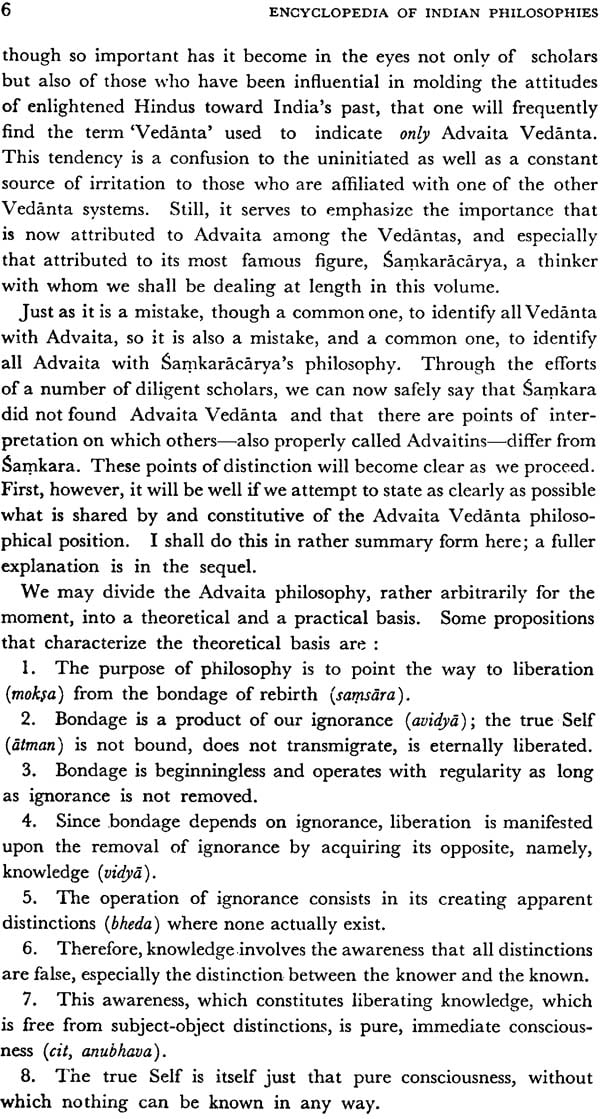


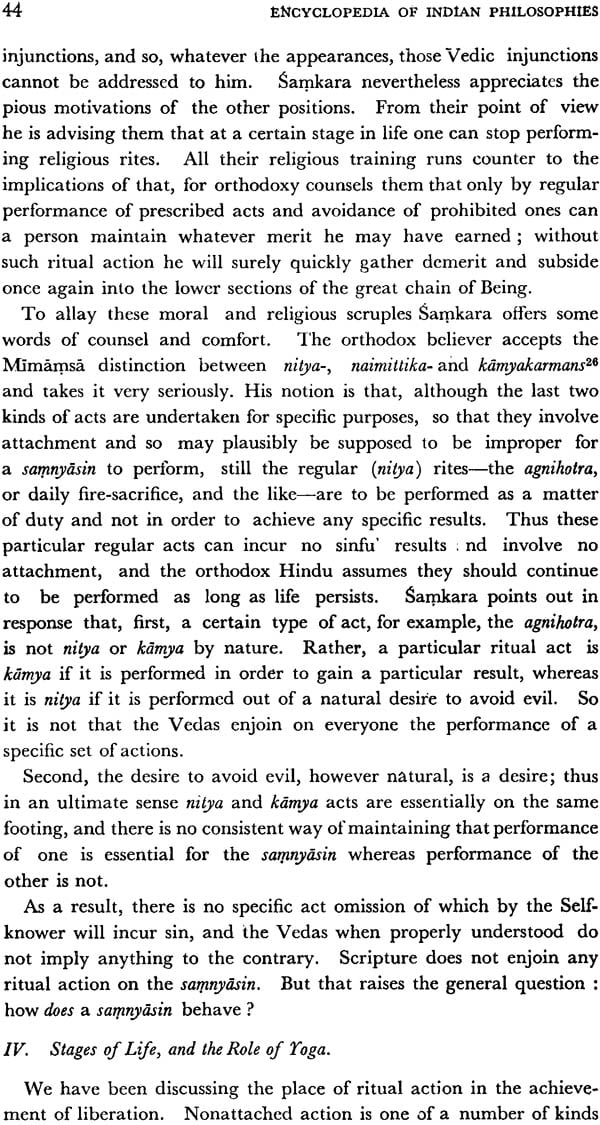
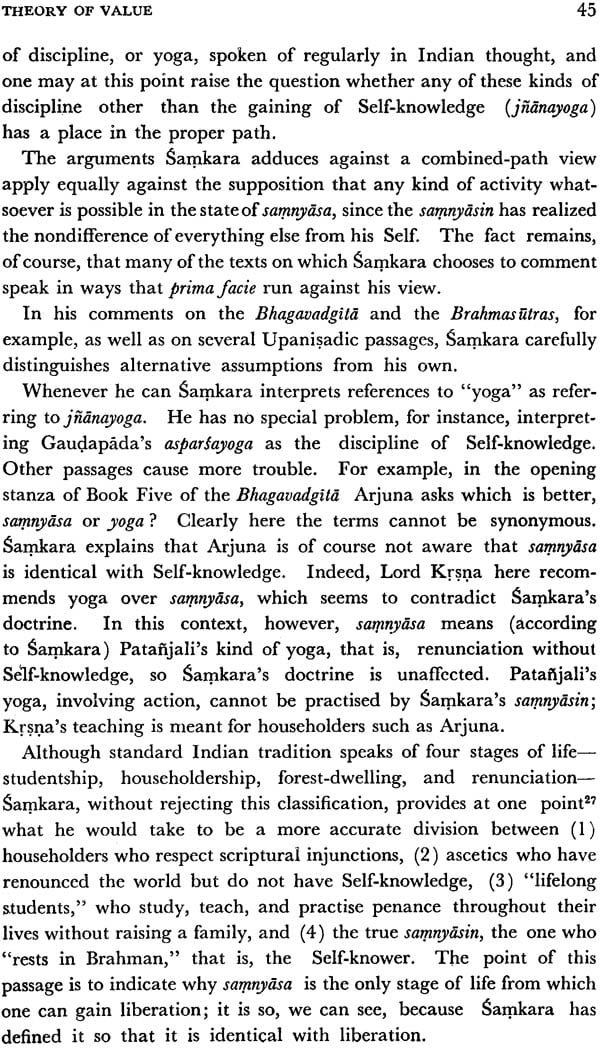
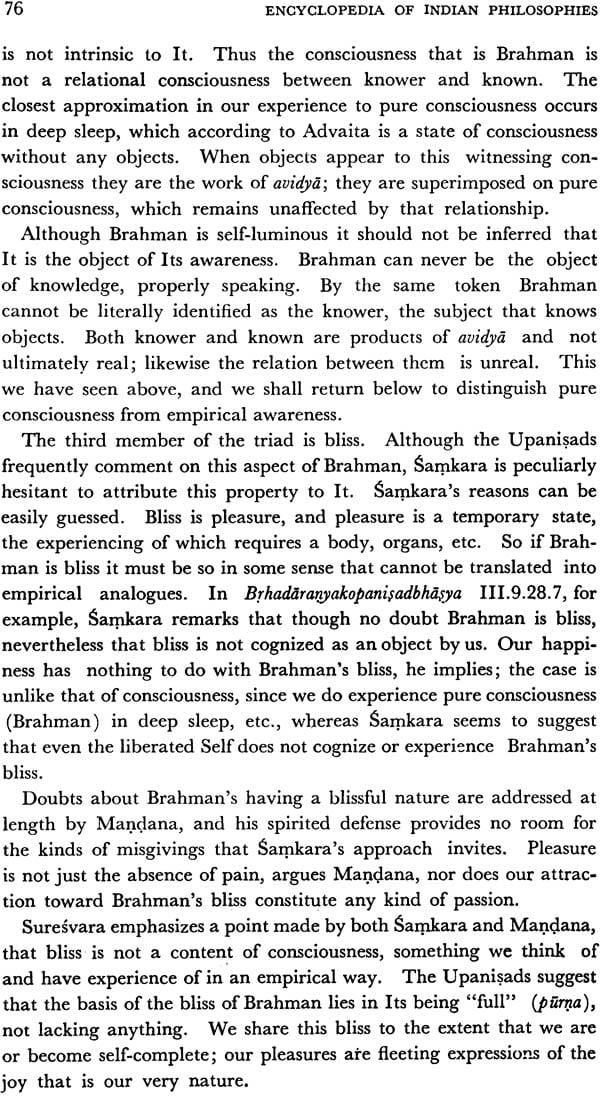
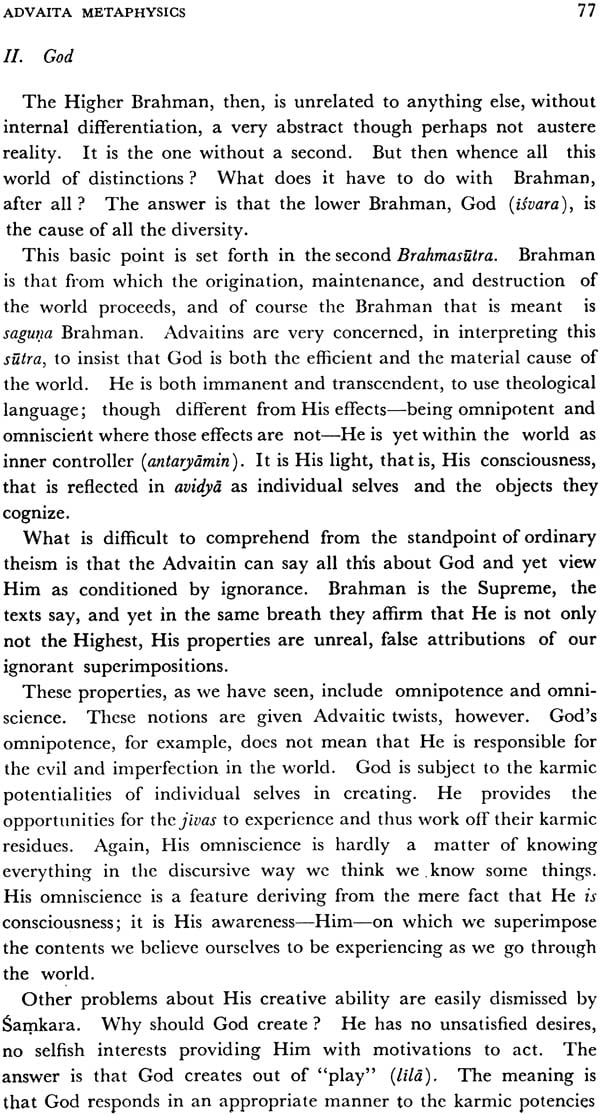
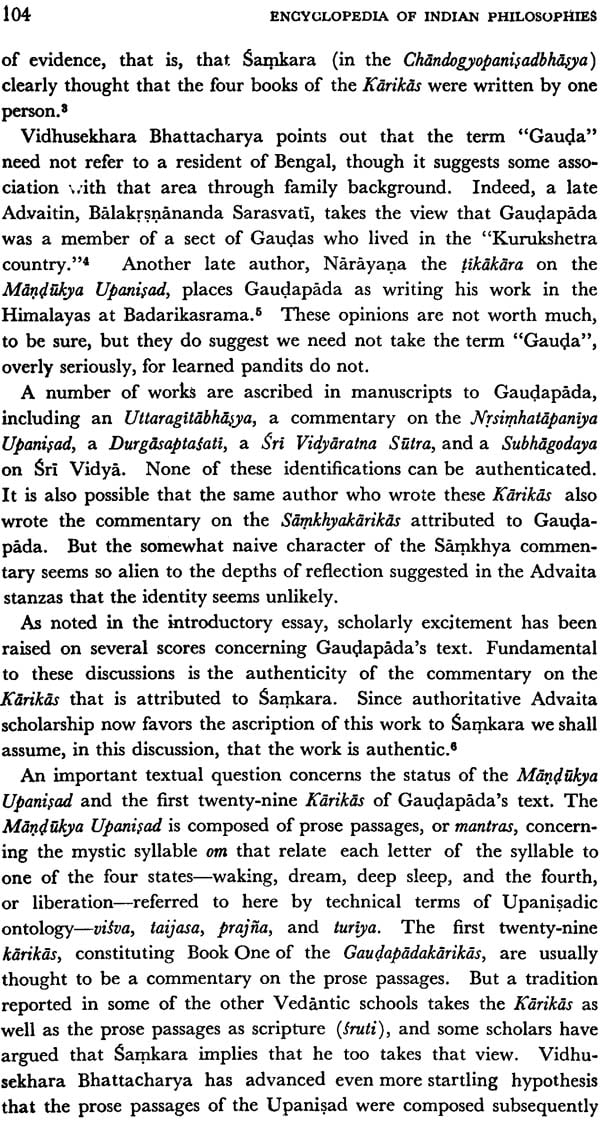
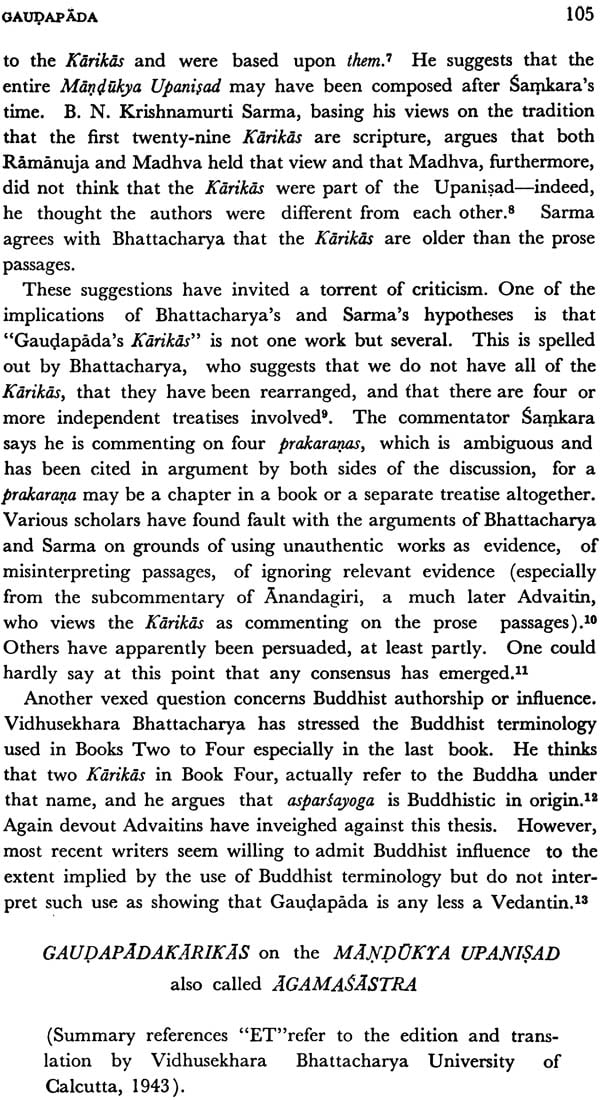


VOL-4
Samkhya is one of India’s oldest philosophical systems, and this volume of the Encyclopedia of Indian Philosophies, coedited by Gernald James Larson and Ram Shankar Bhattacharya, and under the general editorship of Karl H.Potter, traces the history of the system from its beginnings in the third or fourth century. The volume includes a lengthy Introduction (written by G.J. Larson) which discusses the history of the system and its philosophical contours overall. The remainder of the volume includes summaries in English of all extant Sanskrit texts of the Samkhya system. Many of the summaries are of texts that have never been edited, translated of studied before, most notably extensive treatments of the Yuktidipika, the samkhyavrtti and the Samkhyasaptativrtti. The volume is designed for philosophers, cultural historians and students of comparative studies generally. In addition, since the volume contains so much material that also prove to be of interest to area specialists, Indologists and Sanskritists.
Gerald James Larson is professor of the history of religions, Department of religions studies, university of California, Santa Barbara, USA. He is the author of Classical Samkhya: An Interpretation of its History and meaning (Delhi: Motilal Banarsidass, 1979; revised second edition); Myth in Indo-European Antiquity (coedited with C.scott Littleton and J. Puhvel, University of California press, 1974); and In her Image (coedited with P. Pal and R. Gowen, regents of the University of California, 1980); and numerous articles on Indian philosophy and religion.
Ram Shankar Bhattacharya is editor of the journal Purana; senior research scholar in the all India Kashiraj Trust, Fort Ramnagar, Varanasi; and was for some years in the research department of Sampurnananda Sanskrit University, Varanasi, he is the author of numerous editions, translations and studies of original Sanskrit texts in Hindi, Bengali, Sanskrit and English.
Many years ago when I met the great Gopinath kaviraj for the first time in Varanasi, he inquired about my word. I commented that I was working on one of the ancient systems of Indian philosophy, namely, the Samakhya. He impatiently waved his hand to interrupt me. "Samkhya," he said, "is not one of the systems of Indian philosophy. Sankhya is the philosophy of India!" He was referring, of course, to the ancient period, but he also went on to stress the remarkable influence that Samkhya has had on almost every phase of Indian culture and learning. Philosophy, mythology, theology, law, medicine, art, and the various traditions of Yoga and Tantra have all been touched by the categories and basic notions of the Samkhya. This is not at all to claim that these various areas of learning and cultural practice have accepted the dualist metaphysics of Samkhya or its overall classical systematic formulation. To the contrary, there have been intense polemics over the centuries against the Samkhya position. What is striking, however, is the ubiquitous presence of the Samkhya network of notions, functioning almost as a kind of cultural “code” (to use a semiotics idiom) to which intellectuals in every phase of cultural life in India have felt a need to respond.
The present volume of the Encyclopedia of Indian philosophies attempts to trace the history and to interpret the meaning of Samkhya philosophy from its beginnings in the ancient period to the present time, a period of some twenty- five hundred years. As might well be imagined, it has not been an easy task to accomplish this in one volume. Ram Shankar Bhattacharya and I have had to make some difficult editorial decisions by way of limiting the boundaries of our undertaking. One such decision concerned the manner in which we would treat ancient and/or "popular" (Nontechnical) Samkhya passages. For a time we considered the possibility of including summaries of Samkhya passages in the Upanisads, the Mahabharata (including the Bhagavadgita), the Puranas, the medical literature, and so forth. As we proceeded in our work, however, it became clear that these passages could be best treated in the Introduction to the present volume. More than that, it became clear that these passages represent what could be called "Proto-Samkhya" and should be clearly distinguished from what we are calling in the present volume "Pre-Karika-Samkhya." "karika-samkhya," "Patanjala- samkhya," "Karika-Kaumudi-samkhya," "Samasa-Samkhya," and "sutra-samkhya" (and see Introduction).
A second editorial decision concerned the manner in which we would deal with the extensive number of passages in Indian philosophical literature that criticize Samkhya from the perspective of other traditions, passages, for example, from Nyaya, vaisesika, Buddhist Jaina, Mimamsa, and Vedanta works. Again, for a time we considered the possibility of including at least some of these passages, but we ultimately determined that such passages appropriately belong in their own respective volumes in the Encyclopedia series and not in the Samkhya volume itself.
A third editorial decision concerned the manner in which we would deal with the issue of the literature of Yoga. Our own view is that "Patanjala-Samkhya" is an important type of samkhya philosophy and deserves to be treated as such, but we encountered the practical difficulty of some seventy Sanskrit texts on Yoga that should be considered. The only sensible solution appeared to be, therefore, to prepare a separate volume of the Encyclopedia series for the Yoga materials with appropriate cross-references in both the samkhya and Yoga volumes. Eventually, then, when both volumes are published, they can be used in tandem.
Apart from such external editorial decisions, that is to say, what to exclude from the volume, we also had to make a number of decisions regarding the internal boundaries of the volume. It was obvious from the beginning, for example, that three of our texts required special treatment, namely, the Samkhyakarika, the Tattvasamasasutra, and the Samkhyasutra. These are the three fundamental and primary texts of the tradition upon which most other texts are based, and each presented a unique problem. Because the Samkhyakarika is the oldest systematic text available, we thought it appropriate to present an extensive treatment of it. Indeed, the so-called "summary" of the Samkhyakarika in the volume is considerably longer than the original text itself! In our view, however, since our task was not that of translation but, rather, that of presenting an overview of te systematic philosophical arguments in the text, we felt justified in taking some liberties in unpacking those arguments. Regarding the Tattvasamasasutra, the problem was the reverse. The tattvasamasa is not really a text in any sense. It is a checklist of topics upon which several commentaries have been written. We have, therefore, presented it in its entirety as a checklist. The samkhyasutra, as is well known, is a late compilation, and there is no authoritative tradition either for the sequence of sutras or their interpretation apart from the reading and interpretation offered, first, by Aniruddha, and then later by Vijnanabhiksu (who generally follows Aniruddha, throughout). We have, therefore, presented the sutras themselves in a bare, outline form. We have, therefore, presented the sutras themselves in a bare, outline form. We have, then, presented a full summary of Aniruddha’s reading and interpretation followed by a shorter summary of Vijnanabhiksu’s reading and interpretation (stressing only those views of vijnanabhiksu that clearly differ from Aniruddha).
In three instances in the volume we have presented unusually detailed summaries, namely, those for the Samkhyavrtti, the samkhyasaptativrtti, and the Yuktidipika. The former two texts are those recently edited by Esther A. Solomon, and because they have been unknown in Samkhya studies until now, we invited Professor Solomon to prepare full treatments of both. The latter text, the Yuktidipika, is undoubtedly the most important text for understanding the details of the Samkhya system, but until now no translation has been available. We thought it appropriate, therefore, to include as full a treatment of it as possible. The summary of the Yuktidipika in this volume is not by any means exhaustive, but it does provide a wealth of information that has until now been unavailable.
Dr. Ram Shankar Bhattacharya and I would like to take this opportunity to thank all of those who helped to bring this volume to completion. First, of course, our thanks to the many contributors (see list of contributors) who prepared the published summaries. Second, a special word of thanks and acknowledgement to those who prepared summaries of passages that could not be included in the final published version of the volume- passages, for example, from Jaina, Buddhist, or epic literature that, based on our final editorial decisions, finally fell outside of the boundaries of the volume, or summaries in which it became apparent that a particular text was simply repeating what had been said earlier in terms of philosophical interpretation. In this regard, we would like to thank and acknowledge the help of Dr. Biswanath Bhattacharya (Calcutta Sanskrit college), Dr. Sabhajit misra (university of Gorakhpur), Dr.R.K.Tripathi (Banaras Hindu university), and Dr. S.P. Verm a (kuruksetra university).
Several research assistants have helped us in our work along the way, and we would like to thank and acknowledge them as well: Dr. Jayandra soni, formerly of Banaras Hindu University and currently at Mcmaster University in Ontario, Canada; Dr. James McNamara, former doctoral students in religious studies at the University of California, santa Barbara. Also, a special word of thanks for the research assistance of Dr. Edeltraud Harzer, of the Unirersity of Washington, seattle. Our thanks, furthermore, to the American Institute of Indian studies and the Indo-U.S. Subcommission for Education and culture for financial assistance to our various contributors and to the coeditors, and, finally, our thanks and appreciation to Karl H. potter for his continuing patience, encouragement, and help in his capacity as general editor of the Encyclopedia of Indian Philosophies.
For the nonspecialist reader of the volume, it should be noted that the Index provides brief definitions of many technical Samkhya terms before listing page numbers and may be used, therefore, as a glossary for those unfamiliar with the Sanskrit terminology of the Samkhya system. An additional glossary for classical Samkhya terminology may also be found in Gerald J.Larson, Classical samkhya (2nd edition, Delhi: motilal Banarsidass, 1979), pp. 237-247.
Full diacritical marks are given only for all primary entries of texts and authors in the volume. In the case of modern Indian scholars, namely, authors of secondary work, summarizers, and other contributors, names are cited without diacritical marks, in accordance with current convention in modern India, Likewise, the names of modern Indian cities are given without diacritical marks.
| Preface | xi | |
| Part one : | ||
| Introduction to the philosophy of Samkhya (Gerald James Larson) | ||
| The History and Literature of Samkhya | 3 | |
| I. | Proto-Samkhya and Pre-Karika-Samkhya | 3 |
| II. | The Samkhya Textual Tradition | 14 |
| Karika-Samkhya and Patanjala-Samkhya | 18 | |
| Karika-kaumudi-Samkhya | 29 | |
| Samasa-Samkhya | 32 | |
| Sutra-Samkhya | 35 | |
| The philosophy of Samkhya | 43 | |
| Preliminary Remarks | 43 | |
| I. | Samkhya as Enumeration | 48 |
| II. | Samkhya as process materialism | 65 |
| III. | Samkhya as contentless consciousness | 73 |
| IV. | Samkhya as rational reflection | 83 |
| Part Two : | ||
| Summaries of works | ||
| 1. | Kapila | 107 |
| 2. | Asuri | 107 |
| 3. | Pancasikha | 113 |
| 4. | Sastitantra | 125 |
| 5. | Paurika | 129 |
| 6. | Pancadhikarana | 129 |
| 7. | Patanjali (the Samkhya teacher) | 129 |
| 8. | Varsaganya | 131 |
| 9. | Vindhyavasin | 141 |
| 10. | Madhava | 147 |
| 11. | Isvarakrsna | 149 |
| Samkhyakarika (karl H.potter; Gerald J. Larson) | 149 | |
| 12. | Patanjali (the Yoga teacher) | 165 |
| 13. | Suvarnasaptati (G.J.Larson) | 167 |
| 14. | Samkhyavrtti (Esther A. Solomon) | 179 |
| 15 | Samkhasaptativrtti E.A. Solomon) | 193 |
| 16. | Gaudapada | 209 |
| Samkhyakarikabhasya (G.J.Larson) | 210 | |
| 17. | Vyasa, or Vedavyasa | 225 |
| 18. | Yuktidipika (Raghunatha Sharma, Dayanand Bhargava, and shiv kumar sharma) | 227 |
| 19. | Jayamangald (Ram Shankar Bhattacharya) | 271 |
| 20. | Samkara | 289 |
| 21. | Matharavrtti (Harsh Narain) | 291 |
| 22. | Vacaspati Misra | 301 |
| Tattvakaumudi (G.J. Larson) | 301 | |
| Tattvavaisaradi | 312 | |
| 23. | Bhojaraja | 313 |
| 24. | Tattvasamasasutra | 315 |
| 25. | Kramadipika (Anima Sen Gupta) | 321 |
| 26. | Samkhyasutra | 327 |
| 27. | Aniruddha | 333 |
| Samkhayasutravrtti (G.J. Larson) | 333 | |
| 28. | Vijnanabhiksu | 375 |
| Samkhyapravacanabhasya (Sangamlal Pandey) | 376 | |
| Samkhyasara (R.S. Bhattacharya) | 401 | |
| Yogavarttika, Yogasarasamgraha | 412 | |
| 29. | Bhavaganesa | 413 |
| Tattvayatharthyadipana (Kapil Deo Pandey) | 413 | |
| 30. | Mahadeva Vedantin | 417 |
| 31. | Svayamprakasayati | 419 |
| Gunatrayaviveka (R.S. Bhattachary) | 419 | |
| 32. | Narayanatirtha | 421 |
| Samkhyacandrika (A. Sen Gupta) | 421 | |
| 33. | Nagoji Bhatta | 429 |
| 34. | Vamsidhara Misra | 431 |
| Tattvavibhakara (Kedaranatha Tripathi and R.S. Bhattacharya) | 431 | |
| 35. | Simananda | 443 |
| Samkhyatattvavivecana (A. sen Gupta) | 443 | |
| 36. | Sarvopakarinitika (K.D. Pandey) | 445 |
| 37. | Samkhyasutravivarana (A. Sen Gupta) | 447 |
| 38. | Kaviraja Yati | 449 |
| 39. | Mudumba Narasimhasvamin | 451 |
| Samkhyataruvasanta (R.S. Bhattacharya) | 451 | |
| 40. | Raghunatha Tarkavagisa | 459 |
| 41. | Devatirtha Svamin | 461 |
| 42. | Taranatha tarkavacaspati | 463 |
| Upodghata (R.S. Bhattacharya) | 463 | |
| 43. | Narendranatha Tattvanidhi | 465 |
| 44. | Bharati Yati | 467 |
| Tattvakaumudivyakhya (E.A. Solomon) | 467 | |
| 45. | Pramathanatha Tarkabhusana | 473 |
| Amala (Kalidas Bhattacharya) | 473 | |
| 46. | Krsnanatha Nyayapancanana | 487 |
| Avaranavarini (K.D. Bhattacharya) | 488 | |
| 47. | Hariprasada | 501 |
| Samkhyasutravrtti (R.S. Bhattacharya) | 501 | |
| 48. | Balarama Udasina | 509 |
| Vidvattosini (R.S. Bhattachayra) | 509 | |
| 49. | Pancanana Tarkaratna | 521 |
| purnima (K.D. Bhattacharya) | 521 | |
| 50. | Kunjavihari Tarkasiddhanta | 545 |
| Tattvabodhini (Prabal kumar Sen) | 445 | |
| 51 | Krsnavallabhacarya | 451 |
| Kiranavali (R.S. Bhattacharya) | 451 | |
| Samkhyakarikabhasya (A. Sen Gupta) | 554 | |
| 52. | Rajesvara sastrin Dravida | 559 |
| Tattvakaumuditika (R.S. Bhattacharya) | 559 | |
| 53. | Ramesacandra Tarkatirtha | 563 |
| Gunamayi (K.D. Bhattacharya) | 563 | |
| 54. | Kalipada Tarkacarya | 577 |
| Saraprabha (R.S. Bhattacharya) | 577 | |
| 55. | Hariharananda Aranya | 581 |
| Samkhyatattvaloka (R.S. Bhattacharya) | 581 | |
| 56. | Harirama Sukla | 591 |
| Susama (R.S Bhattacharya) | 591 | |
| 57. | Sivanarayana Sastrin | 599 |
| Sarabodhini (A. Sen Gupta) | 599 | |
| 58. | Naraharinatha | 611 |
| 59 | Sitarama Sastri | 613 |
| 60. | Brahmamuni | 615 |
| 61. | Kesava | 617 |
| 62. | Krsna Misra | 617 |
| 63. | Samkhayaparibhasa | 617 |
| 64. | M.V. Upadhyaya | 619 |
| 65. | Sri Rama Pandeya | 621 |
| Notes | 623 | |
| Index | 661 |

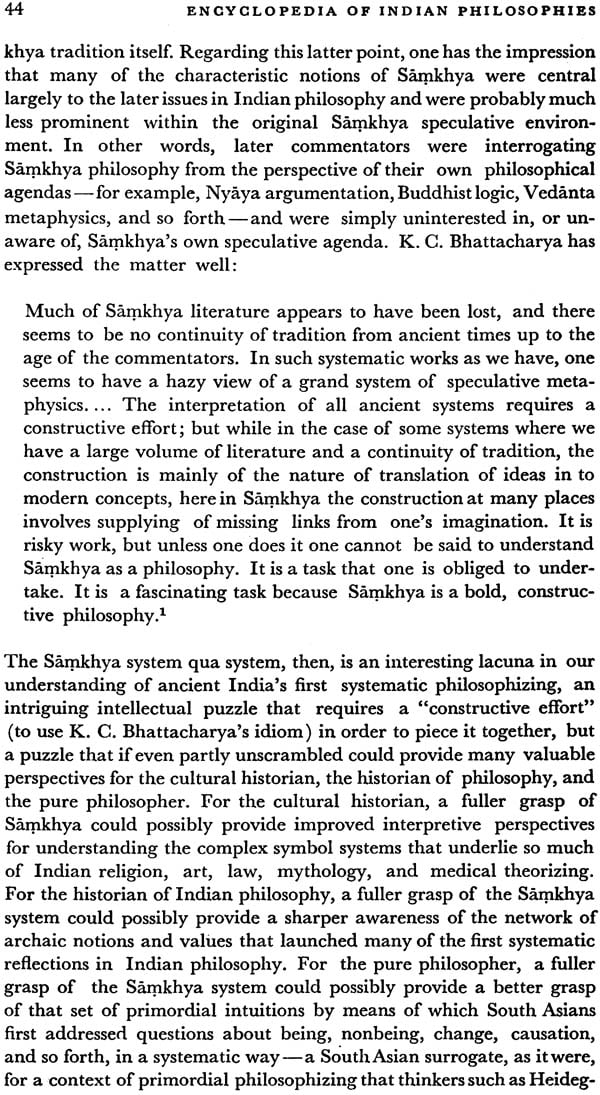







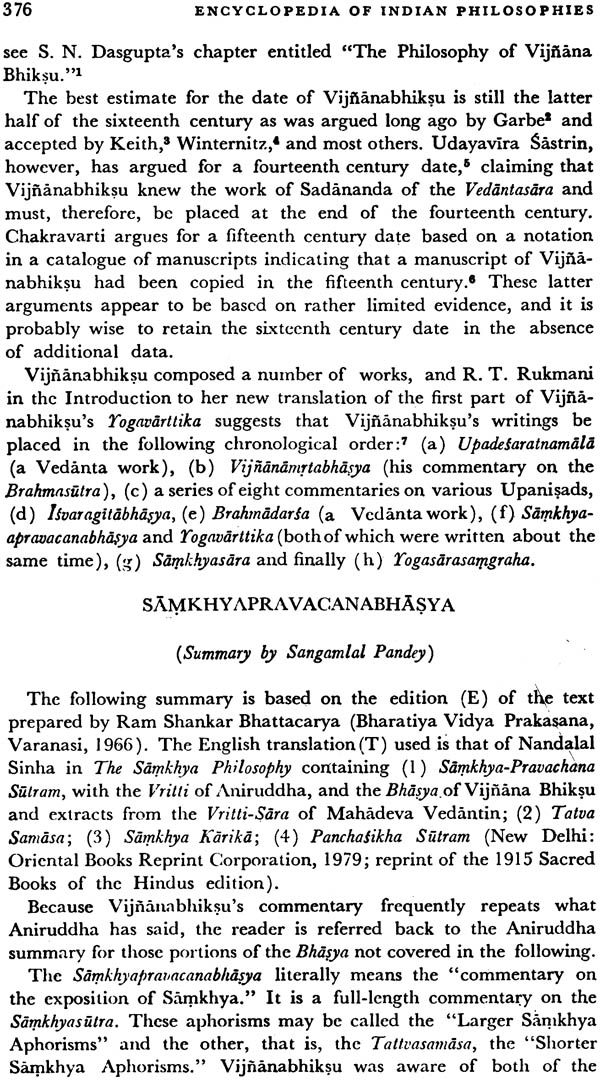






Delivery and Shipping Policy
- INTERNATIONAL SHIPPING
- Rs.1000-1100/kg
- ESTD. Delivery Time: 2-3 weeks (depending on location)
- Bubble Wrapped with Extra Padding
- NATIONAL SHIPPING
- NCR: Rs. 30/half kg
- Standard: Rs. 80/half kg
- Express shipments also available on Request
- ESTD. Delivery Time: Ranging from 1-4 days up to 7 business days (Depending on your choice of Delivery)
- TRACKING
- All orders; national or international, will be provided with a Tracking ID to check the status of their respective orders
- Depending on the Shipping Service, Tracking ID may be used on their respective tracking portals
Frequently Asked Questions (FAQs)
Domestic Shipping: 3-4 Days (after shipping)
International Shipping: 1-2 weeks (based on your location)
You will receive an email once your order has been shipped or you can email us if you didn't receive tracking details (info@mlbd.co.in)
Every book that we sell is the latest edition except all the rare books
Yes, we do provide free shipping, only on domestic orders (within India) above Rs.1500


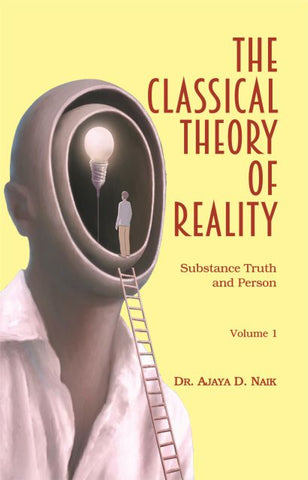
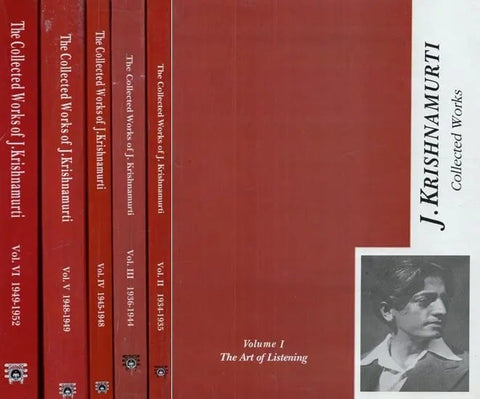
![A HISTORY OF INDIAN PHILOSOPHY [5 VOLUMES] by Surendranath Dasgupta](http://www.motilalbanarsidass.com/cdn/shop/products/HISTORYOFINDIANPHILOSOPHY_large.jpg?v=1675238163)
